- Administrator
- Albums and Singles

Forse 3 is the final release in Alessandro Cortini's "Forse" trilogy. Like parts 1 and 2, Forse 3 has a distinct sound and feeling. Edition of 500.
Alessandro Cortini (Nine Inch Nails, How To Destroy Angels) recorded Forse using a Buchla Music Easel; of which only 13 are known to exist. "Forse," meaning "maybe" In Italian, is a series of 3 double LP releases.
"All pieces were written and performed live on a Buchla Music Easel, in the span of one month. I found that the limited array of modules that the instrument offers sparked my creativity.
Most pieces consist of a repeating chord progression, where the real change happens at a spectral/dynamic level, as opposed to the harmonic/chordal one. I believe that the former are just as effective as the latter, in the sense that the sonic presentation (distortion , filtering, wave shaping, etc) are just as expressive as a chord change or chord type, and often reinforce said chord progressions.
Of all the years with Nine Inch Nails the period spent writing and recording the instrumental record Ghosts I-IV is probably the one which changed my approach to music-making the most. After that record, I started getting more into instrumental composition, although I tried to approach it in a different way. While we had a vast array of tools and instruments at our disposal then, I decided to approach my pieces limiting myself to one instrument only, as I found myself being more decisive when faced with a limited creative environment."
-Alessandro Cortini
More information can be found here.
Read More
- Administrator
- Albums and Singles
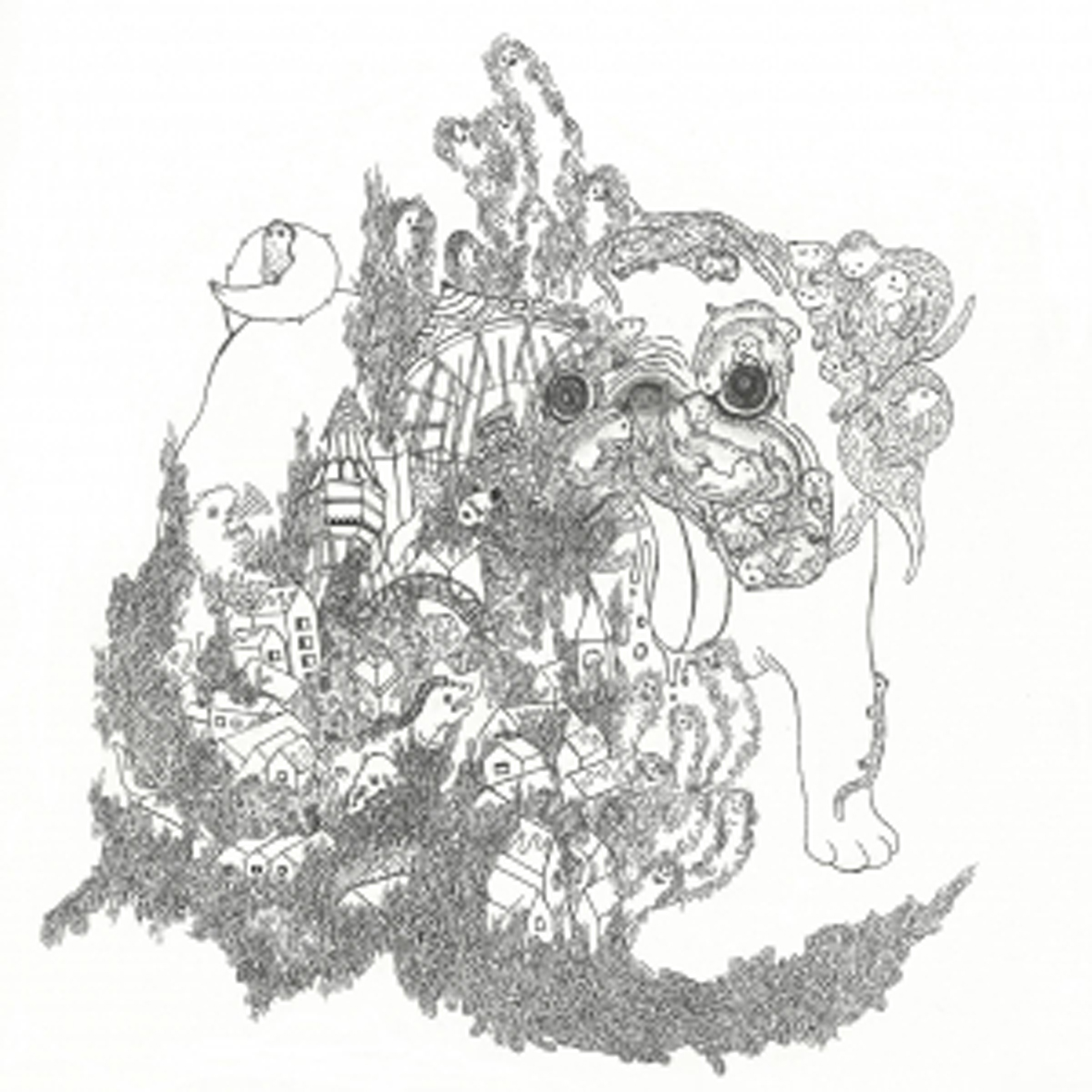 This is certainly an early candidate for the most unexpected release of the year, as few people presumably anticipated that James Blackshaw would suddenly start singing ten albums deep into his career.  As it turns out, he handles the transition from guitar virtuoso to singer/songwriter quite well.  The nearest reference point is unavoidably something like Jim O’Rourke’s jaunty Eureka, as Blackshaw at his best displays a similarly eccentric sensibility and appreciation for kitsch mingled with impeccable musicianship and colorful arrangements.   Although Suns admittedly suffers as a complete statement due to a few lulls, missteps, and a wandering stylistic focus, it mostly makes up for it with the strength of its breezy, charming "singles" and a handful of great instrumental passages.
This is certainly an early candidate for the most unexpected release of the year, as few people presumably anticipated that James Blackshaw would suddenly start singing ten albums deep into his career.  As it turns out, he handles the transition from guitar virtuoso to singer/songwriter quite well.  The nearest reference point is unavoidably something like Jim O’Rourke’s jaunty Eureka, as Blackshaw at his best displays a similarly eccentric sensibility and appreciation for kitsch mingled with impeccable musicianship and colorful arrangements.   Although Suns admittedly suffers as a complete statement due to a few lulls, missteps, and a wandering stylistic focus, it mostly makes up for it with the strength of its breezy, charming "singles" and a handful of great instrumental passages.
There is a huge difference between being a fine composer/instrumentalist and being a great songwriter.  I can think of very few artists who were able to shine at both, so Blackshaw's degree of success with Summoning Suns is quite an admirable feat.  I did not expect him to fall flat or anything, but I also did not expect him to come up with anything as fun, gleefully macabre, and infectiously hooky as the lead-off duet with Harry Nilsson's daughter Annie.  Also, "Confetti" is more than just a catchy song: it sounds like the work of very good band, as Simon Scott's thumping pulse and Blackshaw's upbeat arpeggios are enhanced with colorful splashes of piano and a great string crescendo.  While "Confetti" is admittedly quite indebted to the aforementioned O'Rourke, it also towers over the rest of the album and seems to be what Blackshaw does best.  Also, Jim does not seem to be using that style any more, so I say it is fair game.  Curiously, however, he never revisits that vein again and spends the rest of album trying on different stylistic hats with varying degrees of success.  Also curious: Blackshaw seems to be at his best when he is at his most lightweight, which is an odd talent for an erstwhile Current 93 member to possess.
The second tier of highlights is comprised of "Failure’s Flame" and the title piece.  Initially, the slow-moving and melancholy "Failure’s Flame" does not sound especially promising at all, resembling a decent Elliott Smith song with more intricate guitar-work.  Around the half-way point, however, the drums and vocals drop out and the piece transforms into a lushly beautiful guitar, flute, and piano outro.  "Summoning Suns," on the other hand, boasts an instantly infectious guitar hook and a pleasantly laid-back, shuffling pace.  The brief, totally anachronistic opener ("Averoigne") is another great moment, but it sounds like it belongs on a completely different album.  I have no idea which Blackshaw album a gorgeous major key organ and glockenspiel interlude could possibly have fit on though, so maybe it actually makes perfect sense that it wound up on an influence-juggling, "anything goes" gamble like this one.  In any case, I love it, regardless of how out of place it seems.
The remainder of the album consists of two definite non-highlights and yet another pleasing aberration.  The first lowlight, "Nothing Ever After," again returns to Elliott Smith territory, but does not offer any particularly great twists to elevate it above its general mopiness.  Then "Towa No Yume," a sleepy Japanese-language duet with Kaoru Noda, comes along and saps the momentum still more.  Finally, the album concludes with "Winter Flies," a great steel guitar instrumental that probably would have sounded perfectly at home on Blackshaw’s excellent The Glass Bead Game.  I am not sure how or why it ended up where it did, but it at least ends the album on a strong note.
As a whole, that all makes Summoning Suns a very perplexing mixed bag as a coherent artistic statement, as it feels far more like a collection of outtakes and compilation tracks than anything resembling a new album by a formidable and established artist.  I have no idea why Blackshaw thought that all of these songs belonged in the same place, unless he was attempting to hedge his bets in case his unexpected reinvention as a singer/songwriter was poorly received.  Even though the weaker songs made me wince a bit and I was dismayed by how openly derivative certain moments were, the real story here is what worked rather than what did not work.
Despite its considerable flaws, Summoning Suns is still mostly composed of great songs and some of them are quite gutsy.  I never expected anything as dynamic, hooky, and bouyant as "Confetti," for example.  Also, even some of the less surprising pieces stand among Blackshaw’s finest work.  More important still, I love that Blackshaw is game to take such big chances this deep into his career and I also love his unwillingness to keep revisiting what he has succeeded with in the past.  Consequently, Summoning Suns is ultimately quite an impressive and adventurous album, albeit one with plenty of asterisks.
 
Read More
- Administrator
- Albums and Singles
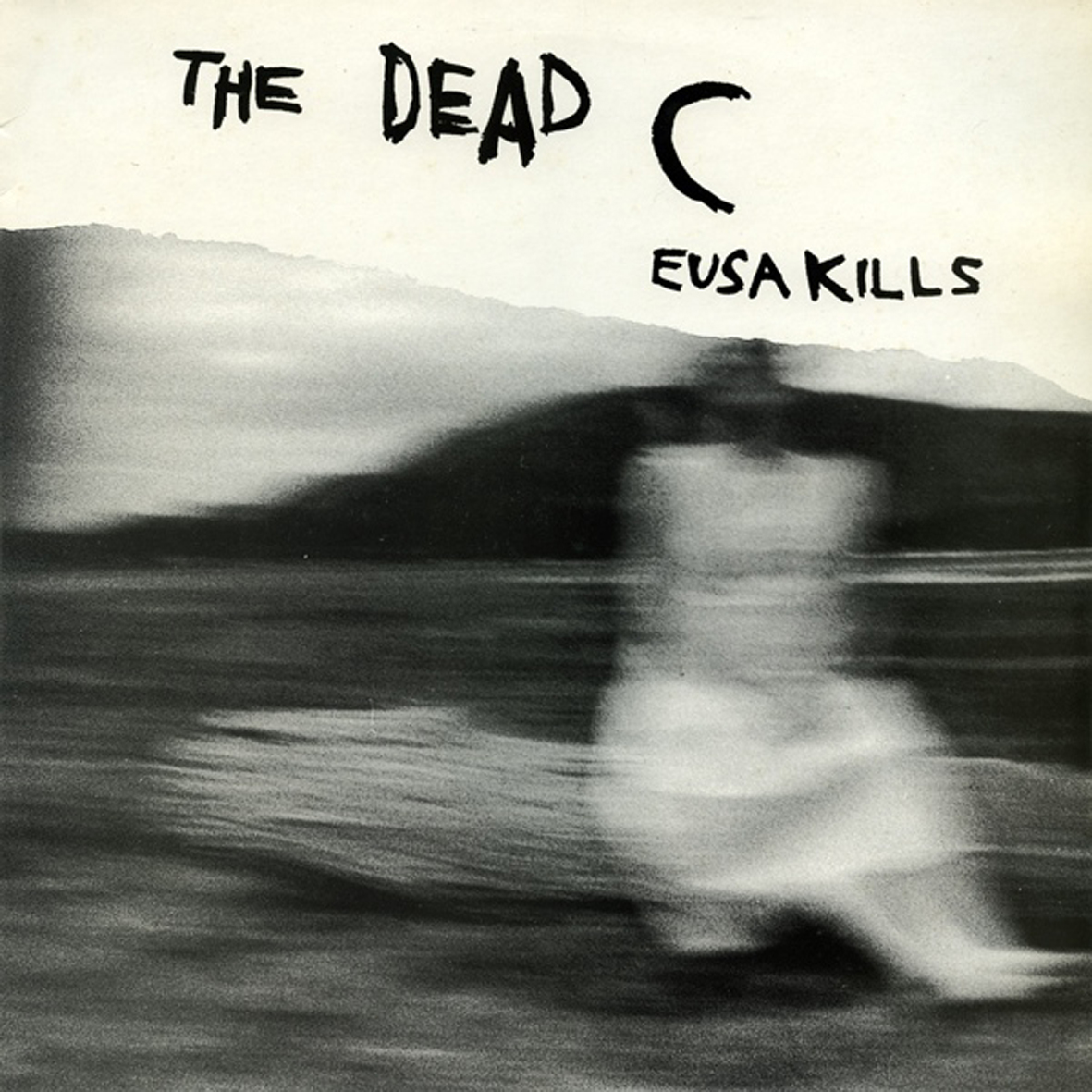 This 1989 album is most notable for being generally regarded as The Dead C’s "pop" album.  Also, a lot of people seem to rank it quite highly within the band’s discography.  I find both of those designations somewhat puzzling, however, as the only real concessions to conventional rock music are the stellar opener and a cacophonous, shambolic T. Rex cover.  Other than that, Eusa Kills is just a lot of messy, half-baked, and contrarian business-as-usual for The Dead C.  The band admittedly keeps most of the songs to pop song durations, but that is less of a structural and songcraft achievement than a decision to just fade out earlier than usual.  While Eusa Kills has its moments, it is far from The Dead C’s prime.
This 1989 album is most notable for being generally regarded as The Dead C’s "pop" album.  Also, a lot of people seem to rank it quite highly within the band’s discography.  I find both of those designations somewhat puzzling, however, as the only real concessions to conventional rock music are the stellar opener and a cacophonous, shambolic T. Rex cover.  Other than that, Eusa Kills is just a lot of messy, half-baked, and contrarian business-as-usual for The Dead C.  The band admittedly keeps most of the songs to pop song durations, but that is less of a structural and songcraft achievement than a decision to just fade out earlier than usual.  While Eusa Kills has its moments, it is far from The Dead C’s prime.
Flying Nun/Ba Da Bing/Jagjaguar
Notably, the lead-off song "Scary Nest" tends to get a lot of comparisons to early Sonic Youth, which seems a bit undeserved and off-the-mark for two reasons: 1.) early Sonic Youth were always much more arty and adventurous guitar-wise than anything in "Nest," and 2.) The Dead C are (and have always been) anything but derivative.  Maybe it sounds even less like a Dead C song than it does a Sonic Youth song though, as it is certainly uncharacteristically propulsive, urgent, and catchy: the drums play a consistent double-time beat, the guitars strum an actual satisfying chord progression, and there is even a hooky vocal melody.  The song itself could probably recall a vast array of other bands (good ones, even!), but the Sonic Youth tag has stuck primarily because of the lo-fi recording and the sputtering, chirping squalls of lead guitar.  There is nothing consciously arty about the noisy guitars though, as they share much more in common with a wild Neil Young performance than anything derived from Glenn Branca or Rhys Chatham.  That "feral" aspect is what makes all the difference for me (it helps that it is enhanced by plenty of wordless vocal howls as well).  The Dead C were not trying to redefine guitar music or ape what was happening in NYC: they were just playing with the perfect balance of controlled songcraft and reckless abandon.  As a result, "Scary Nest" is a great song unlike anything else in The Dead C discography,
Of course, once The Dead C had proven that they could write a killer song that people might like, they immediately set out to prove that they can also write very messy, chaotic songs that are nearly impossible to like by design.  Eusa Kills is full of such pieces.  Sometimes they take the shape of a piece like "Glass Hole Pit," which sounds great and promising, then abruptly ends after a minute.  Other times, the band just noodles and mumbles for several minutes ("Bumtoe") or unleashes a torrent of hookless guitar spew over a tom-heavy beat for 45 seconds, then stops ("Call Off Your Dogs"). Even the better, more fully formed pieces like "Phantom Power" dilute their better ideas with a lot of riffless, hookless, and melody-less guitar noise.  Admittedly, I love guitar noise and there are some cool moments strewn throughout Eusa, but the noise rarely seems to be in service of anything greater– it is mostly just something indulgent to tolerate until something interesting happens.
Thankfully, there are a few enjoyable pieces of varying quality besides "Scary Nest."  The best one is "Now I Fall," which buries an actual coherent song beneath some wonderfully warped, too-loud guitar.  The closing "Envelopment" is also quite good, combining a lazy, overdriven bass melody and ripples of clean guitar to pleasantly warm, sleepy, and druggy effect.  A few other pieces have their champions as well, but I do not know quite what to make of them.  The more perplexing of the two is a cover of T. Rex’s swaggering, anthemic "Children of the Revolution," which is reduced to a dissonant, smoldering, and distinctly non-anthemic wreckage.  I cannot figure out the motive at all: mockery, homage...neither?  I have no idea.  In any case, it is an enjoyable (if puzzling) detournement.  Later, there is a 7-minute piece entitled "Maggot" which presages some of The Dead C’s superior longform work to come.  Unfortunately, it is mostly just notable as a proto-version of better songs like "Love" and "Outside."  I certainly like the snare-roll drums and the miasma of deranged and strangled noises, but it never quite catches fire and features a fairly annoying cackling refrain.  So close to greatness, but just off the mark.  Alas.
With the benefit of hindsight, I think it is safe to say that Eusa Kills is merely an intermittently promising album by a band that would eventually get much better, but I do wonder what I would have thought of this album if I had heard it in its original time and context.  It is hard to imagine a more clear and defiant "fuck you" to the overproduced and image-driven world of '80s pop music than this, so it definitely deserves a place of honor for its sheer wrongness: this is an archetypal "against the grain" album.  However, it is also just the start of something better rather than a golden age unto itself-–willful ugliness and a hilariously bad attitude are great, but it took the band a few more years to perfect the balance between negation, deconstruction, art, and accessibility.  Though Eusa Kills is probably still canonical among Dead C albums, its unevenness and exasperating proportion of filler prevent it from truly ranking among their best work.
 
Read More
- Administrator
- Albums and Singles
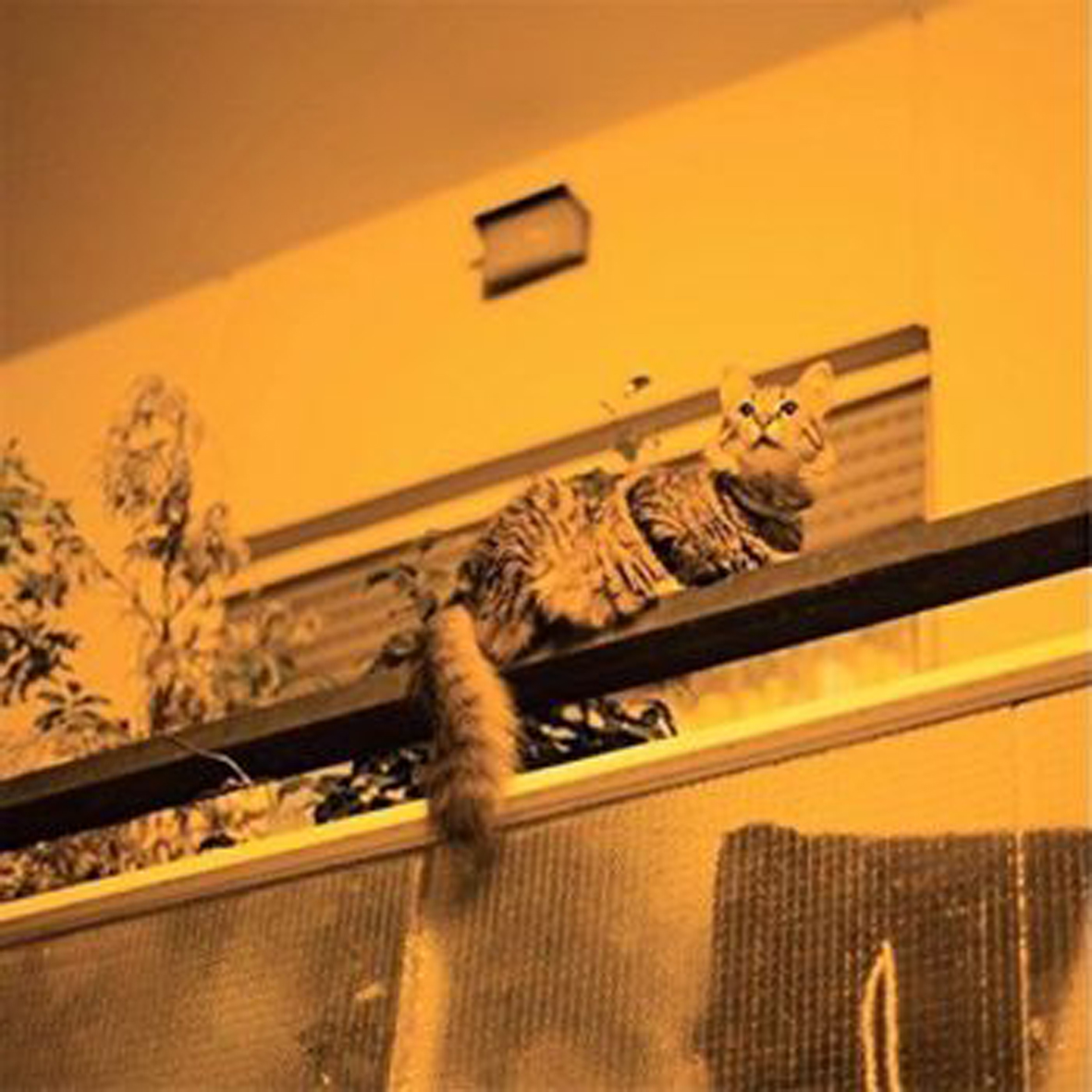 Prekop’s first modular synthesizer solo album (2010's Old Punch Card) came as quite a surprise, but he adapted to the instrument extremely well and later used it to excellent effect on The Sea and Cake's Runner. He returns with another solo synth opus and the only real surprise this time is how great it is: Prekop seems intent on making an unexpected run to the head of the synth revival pack.  While I do not think Alessandro Cortini needs to start panicking that he will stop getting calls for gigs anytime soon, the nine pieces that comprise the "Republic" half of The Republic are as masterfully composed, assured, beautiful, and effortlessly contemporary as anything by any of the genre's other luminaries.
Prekop’s first modular synthesizer solo album (2010's Old Punch Card) came as quite a surprise, but he adapted to the instrument extremely well and later used it to excellent effect on The Sea and Cake's Runner. He returns with another solo synth opus and the only real surprise this time is how great it is: Prekop seems intent on making an unexpected run to the head of the synth revival pack.  While I do not think Alessandro Cortini needs to start panicking that he will stop getting calls for gigs anytime soon, the nine pieces that comprise the "Republic" half of The Republic are as masterfully composed, assured, beautiful, and effortlessly contemporary as anything by any of the genre's other luminaries.
The first half of The Republic is devoted to the 9-part title work, which comprises the meat of the album.  Unusually, the various segments of "The Republic" were composed to soundtrack an installation by David Hartt at the David Nolan Gallery in Manhattan, which makes perfect sense, as Sam himself is also an accomplished visual artist.  However, it has generally been my experience that releasing the musical component of a multimedia work by itself is a sure-fire recipe for disappointment.  The Republic, to its everlasting credit, somehow bucks that trend.  None of the pieces that comprise "The Republic" sound like a backdrop to anything: they all sound like lush, warm, complexly layered, vibrantly pulsing, and fully formed works.  Well, almost fully formed–the sole downside to "The Republic" is that several segments only last for a minute or less.  That is probably a limitation of the technology itself though: Prekop came up with a lot of great motifs that work very well together and was wise to keep his various patches from overstaying their welcome.  My favorite moments are the hissing and quivering drone of "Republic 1" and the insectoid chittering and sputtering of "Republic 5," but the whole suite stands as an excellent work.
The second half of the album consists of somewhat longer individual compositions that are unrelated to Hartt's installation.  As with the "Republic" material, they are all basically pure modular synth compositions, but they vary a bit more in aesthetic.  Also, each seems to depart from "The Republic" material in at least one significant way.  For example, "Weather Vane" initially seems like it would fit fairly well, but then a big, thumping kick drum pulse turns up.  "The Loom," on the other hand, features the kind of maniacal repetition that I associate with early Severed Heads, though Prekop uses it as starting point rather than an end unto itself.  The remaining four pieces, for their part, are all similarly divergent and range from candy-colored, cheery Kosmische pastiche ("A Geometric") to darker and chunkily propulsive works like "Music In Pairs."
While they are objectively good, I do not like the non-"Republic" pieces nearly as much as the "Republic" ones.  The reason for that is somewhat complex, but they essentially fall into the same trap that a lot of noise music does: it sounds like Prekop was pleased that he was able to wrest some appealing sounds from a complex, unpredictable piece of equipment and consequently put them on his album.  Unfortunately, when that happens, the result usually sounds a lot like other artists.  "The Republic" suite, on the other hand, sounds like a distinctive composition that evokes an appealingly bittersweet and mysterious mood.  While it was certainly made using modular synths, it feels like they were merely a tool used to realize a coherent, deliberate vision rather than the driving force for that vision.  That said, as far as I am concerned, the non-"Republic" pieces are basically bonus tracks tacked on to pad the main course.  Consequently, they do not diminish Sam’s achievement at all: I would probably prefer an album devoted entirely to "Republic"-style pieces, but I am certainly delighted by the nine that I got.
 
Read More
- Administrator
- Albums and Singles
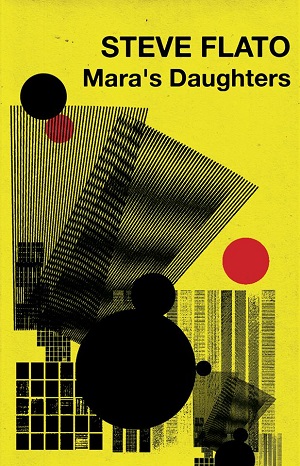 Steve Flato's inaugural cassette release from Lengua de Lava bears two illuminating dedications: one to Richard Maxfield, the innovative American composer, Fluxus member, and electronic music pioneer, and one to Eliane Radigue, the French-born Buddhist convert, equally innovative, whose experiments with feedback, tape loops, and synthesizers gave birth to some of the subtlest and most hypnotic music of the 20th century. The influence of both can be heard on Mara's Daughters, but for the first 41 minutes—the entirety of side A—Radigue's ultra-precise, slowly-unfolding sound is upended. Flato plots his course over harsher terrain. His sound is confrontational and messy, a constantly churning chaos of grinding noise and digital squeals rendered with impressive clarity. It is the kind of bedlam that would ordinarily repel meditation or introspection, but Flato's stratified attack is so massive it implodes and, by unexpected means, pulls the listener into the reflective stillness at its center.
Steve Flato's inaugural cassette release from Lengua de Lava bears two illuminating dedications: one to Richard Maxfield, the innovative American composer, Fluxus member, and electronic music pioneer, and one to Eliane Radigue, the French-born Buddhist convert, equally innovative, whose experiments with feedback, tape loops, and synthesizers gave birth to some of the subtlest and most hypnotic music of the 20th century. The influence of both can be heard on Mara's Daughters, but for the first 41 minutes—the entirety of side A—Radigue's ultra-precise, slowly-unfolding sound is upended. Flato plots his course over harsher terrain. His sound is confrontational and messy, a constantly churning chaos of grinding noise and digital squeals rendered with impressive clarity. It is the kind of bedlam that would ordinarily repel meditation or introspection, but Flato's stratified attack is so massive it implodes and, by unexpected means, pulls the listener into the reflective stillness at its center.
In some Buddhist scriptures, Mara is a demon who sends his three daughters to visit Siddhartha Gautama. Their aim is to seduce him and thereby tempt him away from enlightenment. Despite their beauty Siddhartha rebuffs them and, without celebration or any sign of self-satisfaction, continues down his path to egolessness. Whether or not he intended it, Flato's music reads as an abstracted mirror image of this story. Beside the obvious reference to Buddhism, so integral to Eliane Radigue's private and artistic development, "Mara's Daughters" offers up heavy, frequently strident sounds that harry the mind. They are forceful, emphatic, and distracting, the kind of noises that frustrate concentration on anything else. They are also physical and call to mind mechanical processes. Like Richard Maxfield, who recorded the sound of a tape machine's erase head and used it in his music, Flato documents the clamor of machines cannibalizing themselves. He generates spools of tumultuous racket from data files and alters their qualities by physically handling the tapes on which they are stored. Beneath and within these elements Flato has buried haggard tones that radiate a kind of wan melodiousness. As "Mara's Daughters" progresses those tones emerge more and more and the surrounding noises become just that. Patterns, imagined or otherwise, develop, sound sources become more distinct, and intense focus replaces reckless intensity.
On side B, "Mara's Veils" and "Salton Sea" paint a very different picture of Flato's music. "Veils" begins as a conflagration of rhythmic refuse and piercing sine waves, then slowly transforms into a resounding mass that rises and falls in long metallic breaths. It concludes with a series of harmonic shivers that glimmer in the silence the way mirages waver in the summer heat. This leads naturally to "Salton Sea," named for the accidental lake created in 1905 by engineers employed at the California Development Company. Like its namesake, the music is littered with debris. A constantly fluctuating drone fills the entire piece and above it, or perhaps beside it, bells, voices, and silvery harmonies resonate like ghostly voices echoing off the hardpan. They join the sound of bats and wild dogs barking in the distance, then lose their form. It all concludes with a stretch of manipulated tape. Flato pinches and presses the fabric of the recording, which warps, then bends, then loses its center. A short beep and an abrupt burst of static signals the end. It is an epiphany to realize that the same stillness is at the heart of both Flato's noise and the silence that circumscribes it.
samples:
 
Read More
- Administrator
- Albums and Singles
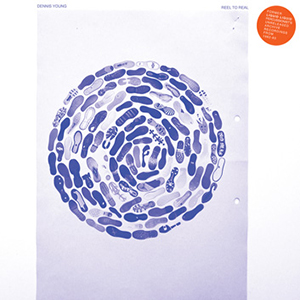 Reel to Real collects Liquid Liquid percussionist Dennis Young's early home recordings while a member of the pioneering New York dance band. Captured on reel-to-reel recordings, hence its (somewhat painfully cliché) title, these pieces range from random experiments to near songs that still have an endearing demo quality to them.
Reel to Real collects Liquid Liquid percussionist Dennis Young's early home recordings while a member of the pioneering New York dance band. Captured on reel-to-reel recordings, hence its (somewhat painfully cliché) title, these pieces range from random experiments to near songs that still have an endearing demo quality to them.
Unsurprisingly, many of the 16 songs that make up this collection feature heavy use of drums and percussion, and end up being the ones I found myself coming back to most.Opening "Big Boom" is literally named, all hollow and pounding drum patterns, with Young's shouty lo-fi vocals appearing as a near afterthought.His playing on "Gravitation" takes on a weirder, almost synthetic quality and timbre, with the same vocal approach.
Complex polyrhythms dot the fittingly titled "Drum Solo," pounding along with a sharp, metallic edge to the icy snare patterns.His inclusion of what sounds like bits of primitive analog synth within the patterns of "More is Less" go a long way, fleshing out what would otherwise be another, less engaging drum solo piece.
Past the drumming, Young's early experiments also heavily focused on synthesizers.The odd "Panic in the Air" sees him pairing his voice with a rapid synth sequence and more traditionally played electric organ.Uptempo keyboard arpeggios and keyboard noodling also feature heavily on "Unknown Origins," though the mix is more expansive and his inclusion of vocals give a more fully realized feel.Similar is the tight sequences and dramatic flair of "Contortions" which, while still having a loose bedroom-recorded sensibility to it, feels more like a song rather than an experiment.
Peppered throughout are some less structured, more obvious experiments that range from interesting to skippable.Something like "Overdub Dub" sticks out as an odd bit of reggae sound, filtered through the lens of post-punk to resemble the likes of PIL or The Slits but less confident.There are also a few folksy passages, such as "Aliens," which is all cheap acoustic guitar and lighthearted vocals that bear more than a passing resemblance to Genesis P-Orridge.
Approaching Reel to Real as a traditional album would be a major mistake, since it is intended to be nothing more than a collection of forgotten, closeted demos and experiments.Personally, I have always been fond of these sort of compilations.There is an exuberance and excitement within the weird noises and odd experiments that might not be something for everyday rotation, but still great to dig into when the mood strikes.
samples:
 
Read More
- Administrator
- Albums and Singles
 Sigmarsson's work with the Icelandic group Stilluppsteypa frequently showcases both absurdity and dissonance heavily, and while his own work bears traces of that, divorced from any imagery, has more of a dark quality to it. At times austere, but not at all devoid of humor, it is three long pieces that never become stagnant resulting in a gripping collection of tones and textures.
Sigmarsson's work with the Icelandic group Stilluppsteypa frequently showcases both absurdity and dissonance heavily, and while his own work bears traces of that, divorced from any imagery, has more of a dark quality to it. At times austere, but not at all devoid of humor, it is three long pieces that never become stagnant resulting in a gripping collection of tones and textures.
The title of the album is undoubtedly related to the length of time it took to complete:recordings on here date back to 1998 but not completed until just last year.The first piece has Sigmarsson weaving together field recordings and the ambiance of idling machines, sometimes dissonant and sometimes melodic.It is on here that he especially showcases some dark, dramatic passages and textural spaces.
The feel of the second section is not too dissimilar, beginning with a short lived metallic expanse.Much of the piece is constructed around complex, hollow humming noises that mimic that of air conditioners or heavy equipment, but treated to bring out different, almost musical qualities.Later on he brings in what sounds like a conventional synthesizer passage, bathed in distortion and noise.At this point the record seems to shift, with Sigmarsson bringing bits of music into the otherwise abstract space.Tones almost resemble otherworldly symphonies mixed with expansive field recordings, intangible yet impeccably composed.
A passage of organ music is introduced in the closing minutes of this second segment, according to the liner notes titled the "garage days organ session" with Helgi Thorsson (of Stilluppsteypa) and frequent collaborator BJ Nilsen.It is at this point that the lighter, more absurdist moments of Sigmarsson's other work becomes apparent. This loose bit of organ improvisation drifts into the third and final piece, which is comparatively more static.It is not repetitive, but it stays more within a single dynamic and overall sound compared to the drastic jumps and variations that appeared before.
Sigtryggur Berg Sigmarsson does not reinvent a genre or make drastic strides in the world of experimental electro acoustic composition on So Long.However, it is exceptional in the way he blends varying textures and noises, moods and spaces, into a constantly expanding and developing record.Any sort of narrative that he may be trying to convey is anything but obvious, but the content of the music itself was more than enough to sustain my interest.
samples:
 
Read More
- Administrator
- Albums and Singles
 This 1995 release is generally regarded to be one of the dirt-encrusted jewels of The Dead C's frequently perplexing discography.  For the most part, however, that place of honor is almost entirely due to just one song: the lumbering and smoldering epic "Outside."  A fairly strong case can also be made for one or two other pieces, but the remainder celebrates the trio at their messy, contrarian, hookless, and indulgent height.  Some listeners will likely find those pieces brilliantly annoying, but most (like me) will probably find them exasperatingly pointless and half-assed.  On the bright side, "Outside" is almost longer than all of the weaker pieces combined and it is about as good as noisy guitar music gets.
This 1995 release is generally regarded to be one of the dirt-encrusted jewels of The Dead C's frequently perplexing discography.  For the most part, however, that place of honor is almost entirely due to just one song: the lumbering and smoldering epic "Outside."  A fairly strong case can also be made for one or two other pieces, but the remainder celebrates the trio at their messy, contrarian, hookless, and indulgent height.  Some listeners will likely find those pieces brilliantly annoying, but most (like me) will probably find them exasperatingly pointless and half-assed.  On the bright side, "Outside" is almost longer than all of the weaker pieces combined and it is about as good as noisy guitar music gets.
In what can only be described as a classic Dead C move, The White House opens in singularly obnoxious and off-putting fashion.  Few artists are less concerned with putting their best foot forward than these guys, a fact borne out by the one-two anti-punch of "Voodoo Spell" and "The New Snow." For its part, "Voodoo" literally sounds like two minutes of someone just messing around with a new pedal they bought or an excerpt from some justifiably forgotten noise cassette from the early ‘80s.  The following "New Snow" is initially a lot more promising, as it seems like the blown-out wreckage of cool rock song pregnant with possibility.  Instead of developing into something better, however, it becomes a near-unlistenable 12-minute spew of masturbatory synth noodling.  It is the sort of thing that is so terrible that I am forced to wonder what kind of stuff did NOT make the album.  Later, I am similarly perplexed by the 1-minute celebration of hollow plunking that is "Aime to Prochaine Comme toi mem."  For a six-song album, three worthless songs is fairly unforgivable, no matter how short two of them are.
Thankfully, the remaining three pieces are a different breed altogether, aside from still being characteristically messy and lo-fi.  The first (and least) of the trio ("Your Hand") sets the template, taking rock music into an appealingly mumbly, dirge-y, hissing, and jangling place.  It is a perfectly fine piece, if a bit plodding, but it is easily surpassed by what follows.  That said, the plodding pace is kind of the point, as The Dead C are at their best when they sound like a live recording of an otherwise great band totally falling apart (or at least not caring at all what they sound like): guitars stop and start seemingly randomly, the drummer is trying to play as little as possible, the singer sounds half-asleep, whatever structure there is quickly crumbles, and the guitar solos are indulgent bursts of cacophony.  By all rights that should be a uniformly awful aesthetic, but the trio sometimes alchemically transforms that mess into something that sounds almost impossibly cool and bad-ass.  "Bitcher," for example, has an actual chord progression and a heavy, sludgy groove, but then it is all gleefully sabotaged with overzealous flanger use that makes it sound like the band is being slowly sucked into a black hole.
The White House’s final piece is its clear zenith, as well as a very solid pick for the single best song that The Dead C ever wrote (though that honor probably goes to Harsh ‘70s Reality’s "Love" for me).  In a general sense, "Outside" does not do anything particularly different from the other "songs," aside from boasting a clearer, stronger vocal melody.  In all other respects, it sounds exactly like The Dead C, only the best version possible:  recording seemingly started with the song already underway, the "beat" is lumbering at best, the vocals are half-mumbled, there are only a couple of chords played ad infinitum, and everything is heard through a sheen of static and stuttering, snarling guitar squall.  That is admittedly slightly reductive, as there are some weirdly beautiful buried or chirping guitar parts, but the secret formula otherwise seems to be: 1.) come up with a few cool-sounding chords, 2.) add a decent vocal melody, 3.) turn it all into a smoking wreckage, and 4.) make sure it goes on for a long time.  I do not quite grasp why duration works in The Dead C’s favor, but it does: at nearly 20 minutes, the sizzling, escalating entropy of "Outside" becomes somehow transcendent and hypnotic.  I wish I could say that the rest of the album approached similar heights, but it is crazy to complain that The White House only achieves ragged, stumbling genius once, since no one else has quite achieved anything like it (not that people are exactly queuing up to emulate these guys).  Ultimately, The White House is far from an essential album, but "Outside" is a masterpiece of underground rock at its most magnificently fucked-up.
 
Read More
- Administrator
- Albums and Singles
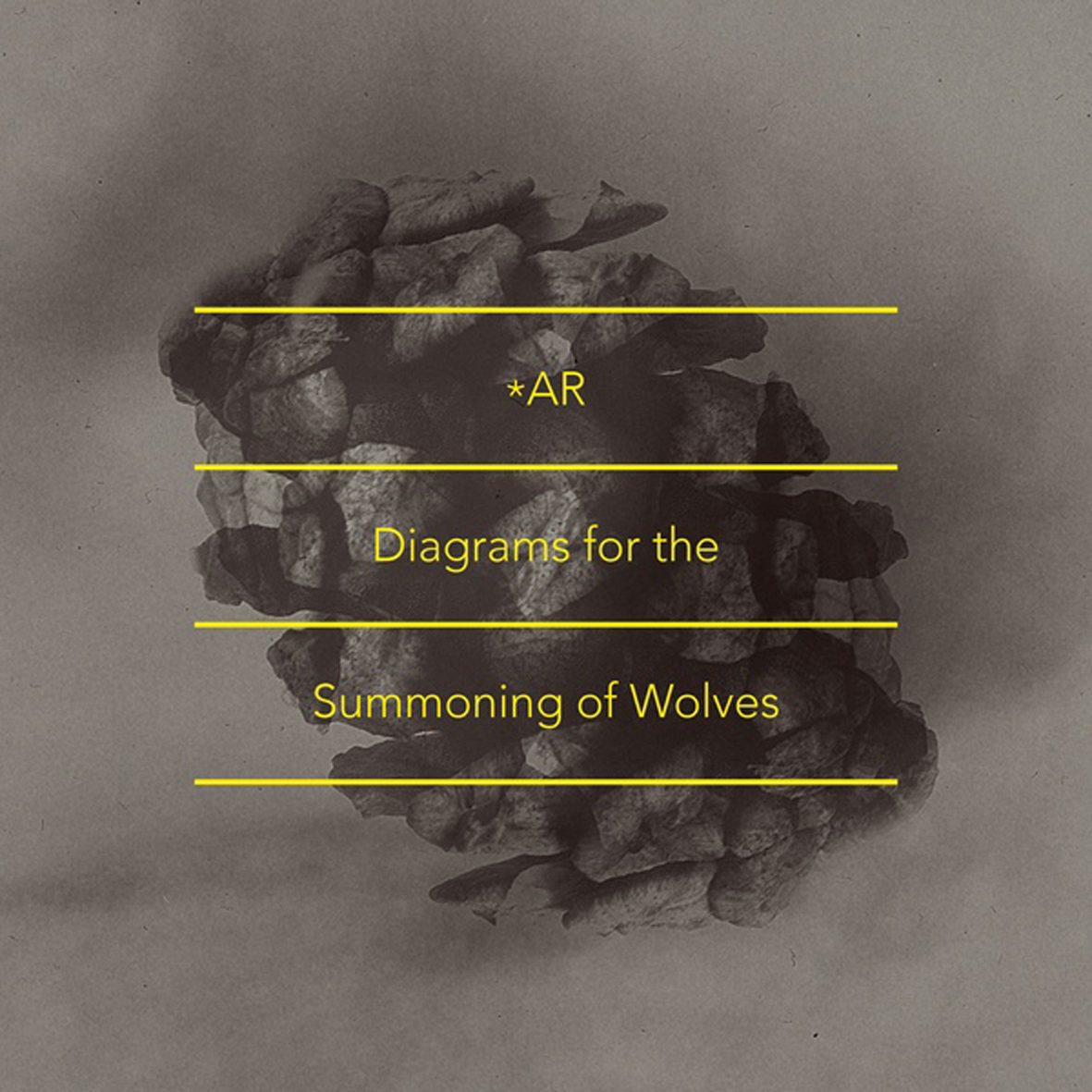
Being a rabid Richard Skelton fan, I was initially heartbroken when this release sold out before I could get my hands on it, but now that I have the digital version I feel quite a bit better.  As far as Skelton albums go, this is a comparatively minor one.  Also, it sounds weirdly like a solo album: while collaborator Autumn Richardson is present in name, her usual vocals are nowhere to be found.  Consisting of just a single 27-minute piece, Diagrams is a likeable, if very slow-burning, drone work built upon a characteristically groaning, melancholy string motif that casts off a (characteristically) glittering spray of harmonics.  Compared to last year's The Inward Circles album, Diagrams admittedly feels like a step back into somewhat well-trodden territory.  However, it is territory that Skelton basically owns and he ratchets up the intensity a bit more than usual this time around, so fans will probably still find plenty to enjoy about this brief dispatch.
As is traditional for Skelton and Richardson, Diagrams for the Summoning of Wolves has some very deep conceptual roots.  Like Wolf Notes and Succession before it, Diagrams is inspired by the dwindling wildness of their home turf of southwest Cumbria, but with an interesting twist.  Whereas *AR's previous albums were intended as meditations upon what was lost and what someday might return, Diagrams is almost exactly what its title suggests: a ritual to summon back the departed wolves.  Sadly, no information is provided as to where this ritual originated or its historical success rate, only that Richard and Autumn somehow transformed the hand gestures, scents, and markings of said ritual into music.  When viewed in that light, the music actually makes a lot of sense: "Hand Gestures, Scents, and Markings" feels much more like the gnarled, steadily intensifying soundtrack to an ancient pagan ritual than a mere modern composition (which would presumably get to the point somewhat quickly rather than purposely simmering in relative stasis).
The music itself generally sticks to Skelton's expected aesthetic of somber, droning bowed strings amidst a prickly thicket of creaks, squeals, and sharp harmonics, but there are some fresh divergences.  For one, "Gestures" is certainly longer than any other single piece previously recorded by *AR and its long, slow build is also something of a departure from the duo's usual fare.  Also, Skelton and Richardson augment their normal sound with some field recordings this time around, most notably with the distant wolf sounds that periodically drift into the quietly brooding opening minutes.  Finally, when it finally fully blossoms (after 15 minutes or so), "Gestures" exhibits a surprising degree of both density and ferocity: there are quite a lot of heavy, grinding metallic textures bolstering Skelton's churning strings.  For a duo as contemplative as Richard and Autumn, Diagrams unexpectedly feels like an album meant to be played quite loud, as only then does it seem like a beautiful, violent catharsis rather than an atypically stretched drone-piece.
Notably, it took me a lot longer to warm to Diagrams than either of *AR’s previous releases, as it occupies a curious sort of no-man’s land for an album: it is too slow-moving to quite work as a headphone album and too fixated on a single motif to quite work as a "song."  Instead, it just kind of feels like ambient music until it fully catches fire: easy to ignore for quite a long time, then gloriously, unexpectedly, and attention-grabbingly heavy.  The pay-off is certainly quite powerful and satisfying when it eventually occurs, but it is not quite rapturous enough to surpass either of the duo's more concise and instantly gratifying previous albums.  As such,  Diagrams is an EP that will primarily only appeal to the already converted, though I ultimately enjoyed it quite a bit,
- Hand Gestures, Scents, Markings
- Hand Gestures, Scents, Markings (excerpt 2)
- Hand Gestures, Scents, Markings (excerpt 3)
 
Read More
- Administrator
- Albums and Singles
 Back in 2010, Jefre Cantu-Ledesma released what is arguably his masterpiece to date, an improbably successful celebration of love entitled Love Is A Stream.  Several years later, its melancholy follow-up captures Jefre in a rather different personal and creative place, albeit one in which his talent for woozy shoegaze guitars remains wonderfully intact.  Within those confines, however, there has been a dramatic change: Stream's lush, dreamy torrent of shimmering guitar noise has been replaced with a much more fragile, fragmented, and submerged-sounding aesthetic. The overall effect is not dissimilar to a playing a sun-warped Cocteau Twins cassette on a malfunctioning tape machine, but in a good way, as Moons evokes a unique mood of bleary, flickering, and half-lit remembrances.
Back in 2010, Jefre Cantu-Ledesma released what is arguably his masterpiece to date, an improbably successful celebration of love entitled Love Is A Stream.  Several years later, its melancholy follow-up captures Jefre in a rather different personal and creative place, albeit one in which his talent for woozy shoegaze guitars remains wonderfully intact.  Within those confines, however, there has been a dramatic change: Stream's lush, dreamy torrent of shimmering guitar noise has been replaced with a much more fragile, fragmented, and submerged-sounding aesthetic. The overall effect is not dissimilar to a playing a sun-warped Cocteau Twins cassette on a malfunctioning tape machine, but in a good way, as Moons evokes a unique mood of bleary, flickering, and half-lit remembrances.
Aside from the perfect, heartbreaking symmetry of being a "break-up album' bookend to Love Is A Stream, 13 Moons is also notable for both its method and its non-relationship extra-musical inspirations. The most significant factor is probably that Jefre recorded the entirely of the album during a three-month residency at the Bay Area's Headlands Center for the Arts, where he had the freedom and resources to devote his entire focus to composing and recording new music all day every day.  While his actual guitar-playing still sounds very much in the same vein as his other recent work, Cantu-Ledesma's recording and composition techniques have changed rather dramatically: 13 Moons is primarily comprised of reel-to-reel recordings of "live takes" with a minimum of overdubbing or layering, though he often augments his guitar with a drum machine, a modular synth, and a bunch of (not particularly prominent) tape recordings culled from his daily life.  The overall effect is quite pronounced, as Jefre's former blissed-out and oceanic guitar noise has been transformed into something much more woozy, wobbly, and delicate.
Also, though he originally set out intending to write a batch of melodic "songs," 13 Moons did not quite turn out that way at all.  One reason is that the album is strongly informed by Jefre's passion for the films of Alain Resnais, Chantal Akerman, and Chris Marker (among others).  Ostensibly, it is Marker's penchant for combining seemingly incongruous elements that played the most significant role in where Moons ended up, but is very easy to see how Resnais's obsessive repetition and shifting perceptions of reality may have manifested themselves as well.  On a more practical level, however, the album probably took shape the way it did mostly because Cantu-Ledesma left Headlands with a mountain of recordings to sift through.  Rather than pick through all that material for choice bits to expand upon, Jefre spent the next week figuring out how to turn it all into a dreamy, quivering, and fractured album-length collage: though there are 16 individual pieces here in name, their durations and differentiations seem quite arbitrarily and irrelevant, though the overall sequencing is itself quite deliberate and effective.
There is still quite a lot of evidence of Jefre's original plan to write structured, melodic songs in pieces like "The Twins/Shadows" and "Agate Beach," but those moments are always very ephemeral: hooks periodically surface only to soon sink back into the haze, segue into something else, or be torn apart by an unexpected snarl of noise.  Also, that bleary, kaleidoscopic aesthetic is further enhanced by the unwaveringly glacial pulse of the drum machine, which makes it feel like time has slowed down dramatically or at least stopped behaving according to normal earthbound rules.  Overall, that adds up to a very unusual, vulnerable, and bittersweetly hallucinatory album.  If Moons has any faults, it is merely that there is not a single individual piece that can be held up as something amazing, nor does it quite feel like the album goes on long enough.  That said, leaving me wanting more is always vastly preferable to overstaying one's welcome and Jefre truly does not make a single misstep anywhere: 13 Moons is basically just an endless succession of superb dream-pop snippets smearing and bleeding into one another to form a beautifully warm and blurred whole.
 
Read More
- Administrator
- Albums and Singles
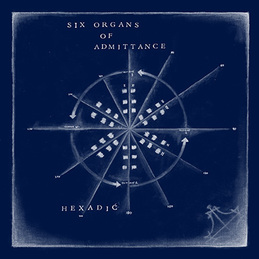
Wine-dark, oozing thick like oil and suddenly bright with phosphorescent lickage, Hexadic is witness to the primordial birth of a new approach to the neck of the guitar.
More information can be found here.
Read More

